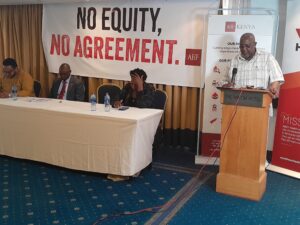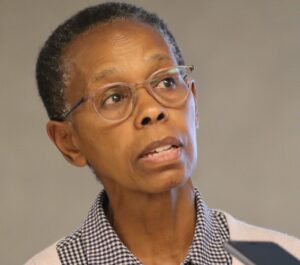
By HENRY OWINO
In early the 20th century, the Maasai were the dominating tribe and occupied large chunks of lands in Kenya. They are one of the very few tribes who have retained most of their traditions, lifestyle and lore.
The community co-exists with wildlife unlike many other tribes in Kenya. The Maasai are semi-nomadic and pastoral community who live by herding cattle and goats.
Maasai are a Nilotic ethnic group inhabiting northern, central and southern Kenya and northern parts of Tanzania. They have distinct social, economic or political systems as a way of their lives and speak the Maa language.
They are a member of the Nilo-Sahara family of languages related to other communities such as Nuer in Southern Sudan, Kalenjin of Kenya among others. Their continuation to hold language, culture and beliefs have heavily contributed to their rich heritage in terms of arts making them distinct people.
However, the community is marginalized and discriminated against by the State in public leadership. Due to these reasons, Maasai community have always maintained to develop their ancestral environments and systems.
Unfortunately, the community large domesticated animals which must be released onto large vegetated outdoor lands for grazing, faces impact of climate change. Historically as nomadic people, they move around with their herds but this is changing as devasting effects of drought is causing them lose the habit.
With the climate change reality, the ravaging effects of drought has made several livestock come to their knees literally in Kajiado County. Communities are worse hit by the effects as there is no pasture and water for the animals.
The prolonged dry spell which began in August this year which has left hundreds of livestock emaciated, some too weak to stand on their four feet, while other just die. The seasonal rivers have dried up and the greens disappeared into dusty wilderness.
The community whose livestock is their main source of livelihoods and unluckily are now dying in their thousands, it means that community existence is also under threat. Many herders are selling the livestock at a throwaway price because greens are long gone leaving only shrubs and desiccated tress covered in dust and rivers also dried up.
Worse still the scorching sun burns holes in the herders’ pockets in terms of trade which has increasingly become unfavorable the livestock keepers. Most markets are flooded with goats, sheep and cattle thus lowering the prices of livestock so many have to sell to keep them from dying.
Typically, October to December marks the beginning of short rains in Kajiado County and its environs marking recovery period for depleted pasture and water sources but again the rains fail short this season. The Maasai community here dependent heavily on livestock and as their herds are weaken the community is threatened.
John Kisimil says the effects of drought has hit them hard especially cattle. Goats at least are withstanding by eating shrubs even if there is no water but cows are dying per hour in day and night.
“Livestock is our main source of livelihood and if they all die, we shall also just die because there is no hope at this rate. Government should intervene and assist us otherwise this is a big lose in our investment,” Kismil pleaded.
The drought has also escalated human- wildlife conflicts. Most livestock have become weak yet wildlife especially leopards, and hyenas invade livestock at home in the night consequently leading retaliation by herders.
In certain parts of Kajiado County, climate crisis and conflicts are adversely affecting mobility. When moving with animals in search of pasture and water weak that are stack on the way and left behind are killed eaten by the wildlife.
While stronger ones may walk but very slowly forcing herders to spend hours or sometimes days to reach at the water point.
Joseph Samperu, a resident of Endonyo Sidai, said nowadays there is a little bit of relief for herders following construction of a borehole in the area. He revealed since commissioning of the borehole, herders no longer have to walk far in search of the precious commodity for their livestock.
“Locals have suffered for years. Imagine the whole community relying on water from seasonal rivers which dries up completely during the drought,” Samperu regretted.
He said during drought residents share single river with wild animals. Yet at night, they attack livestock. Many people have lost their lives because of human-wildlife conflicts in retaliation.
Samperu defended low grades performance by the pupils attributing it to poor schools’ attendance and lack of concentrate on their learning. He disclosed that children are forced to walk for miles in search of for drinking water before going to school in the morning.
Some children drop out of school to become herders during drought as their parents can’t withstand the heat from scorching sun in the herding field. The Maasai also value livestock more than education of their children hence poor education in the community.
Eunice Naserian, said women are severely affected by the drought as they have to look for food, firewood, feed and care for family. The milk production they depend on is no longer available due to depletion of vegetation and lack of water for cattle, so available milk is left for calves.
Naserian regertes that women take a lot of time to look for water thus denying them opportunity to concentrate on economic activities to improve their lives.
Currently, in most parts of the country, there is severe drought and pastoralist communities in especially in Arid and Semi-Arid Lands of Kenya are facing it hard. Approximately 4 million people countrywide are facing severe food crisis as result of prolonged drought and are need of aid.
Majority of pastoralists admit that there are negative impacts of climate change on cattle production. They pointed out that severe persistent drought period resulted in shortage of forage and water, leading to cattle starvation and malnutrition.
Uncertainty of weather patterns have really exposed livestock farmers to severe drought. Many are losing livestock worth millions of Kenya money as result of depletion of vegetation, lack of water. Families face food insecurity, environmental degradation, and wildlife conflict due competition of scare resources.
“As pastoralists we are always aware of the general climate trends in our location, its variability and the impacts of extreme weather events on cattle production. This time round, we have been caught unaware since between September and December there is always short rains, but look it is high temperature and prolonged period of drought,” Simon Kasino revealed.
“Population pressure and tree cutting is the major causes of climate change that is affecting our environment. Government used to urge people to plant two trees for each cut but nowadays people don’t care hence the consequences,” Kasino lamented.
Martin Moshisho Deputy Governor, Kajiado County promises to work with National Government under Department of Drought Preparedness Agency to assist livestock keepers to get water and where necessary to provide relief food and to also buy some of the animals to cushion the farmers from losses.
Moshisho is concern with the range of negative impacts of current climate change and extreme weather events on cattle production. He therefore stated the implications of climate change must be considered to ensure longer-term survival and sustainability of pastoralist communities through strengthening of climate risk awareness programs and early warning systems across the counties.
Further, national and county governments and should come with alternative support mechanisms to pastoralists in order to help them deal with the negative impacts of climate change on livestock production.











Hi this is somewhat of offf topic but I waas wanting to know if blogs use WYSIWYG eitors or if you have
tto manually code with HTML. I’m starting a
blog soon but have no coding experfise so I wanted to get guiidance from someone with experience.
Any help would be greatly appreciated!
Feel free to sudf to my website … https://Casinovavada.Blogspot.Com/2021/12/Blog-Post_22.Html